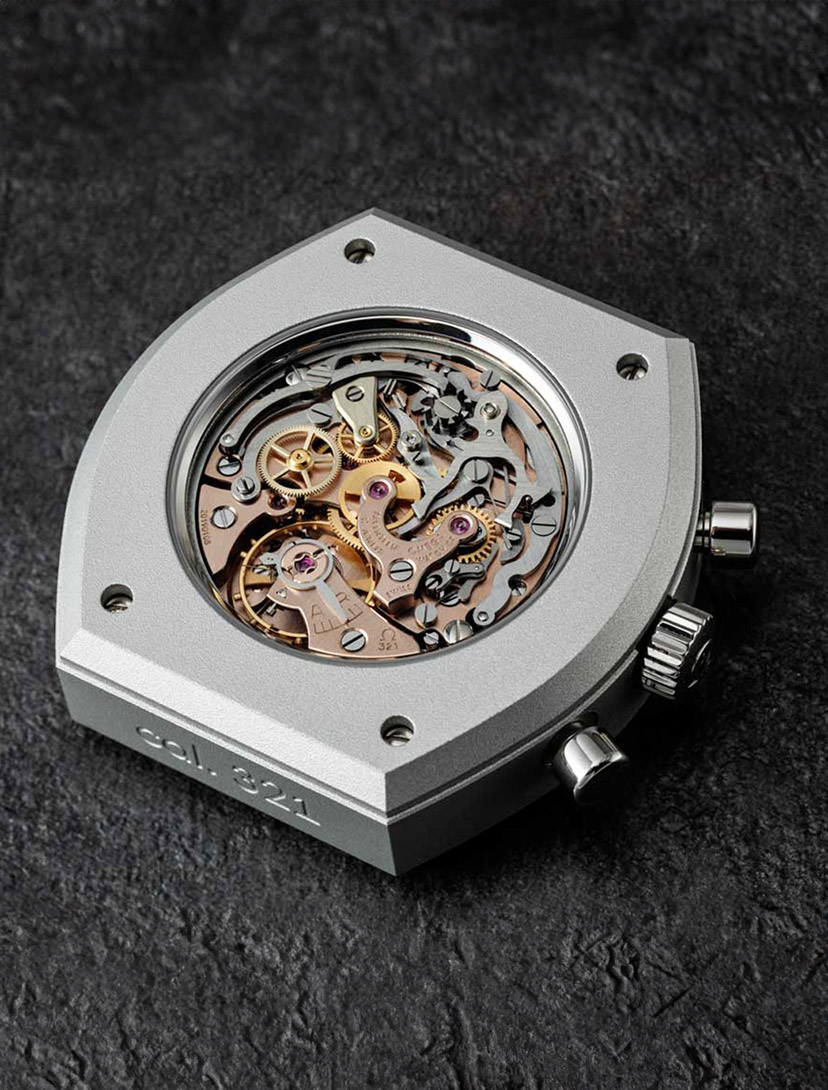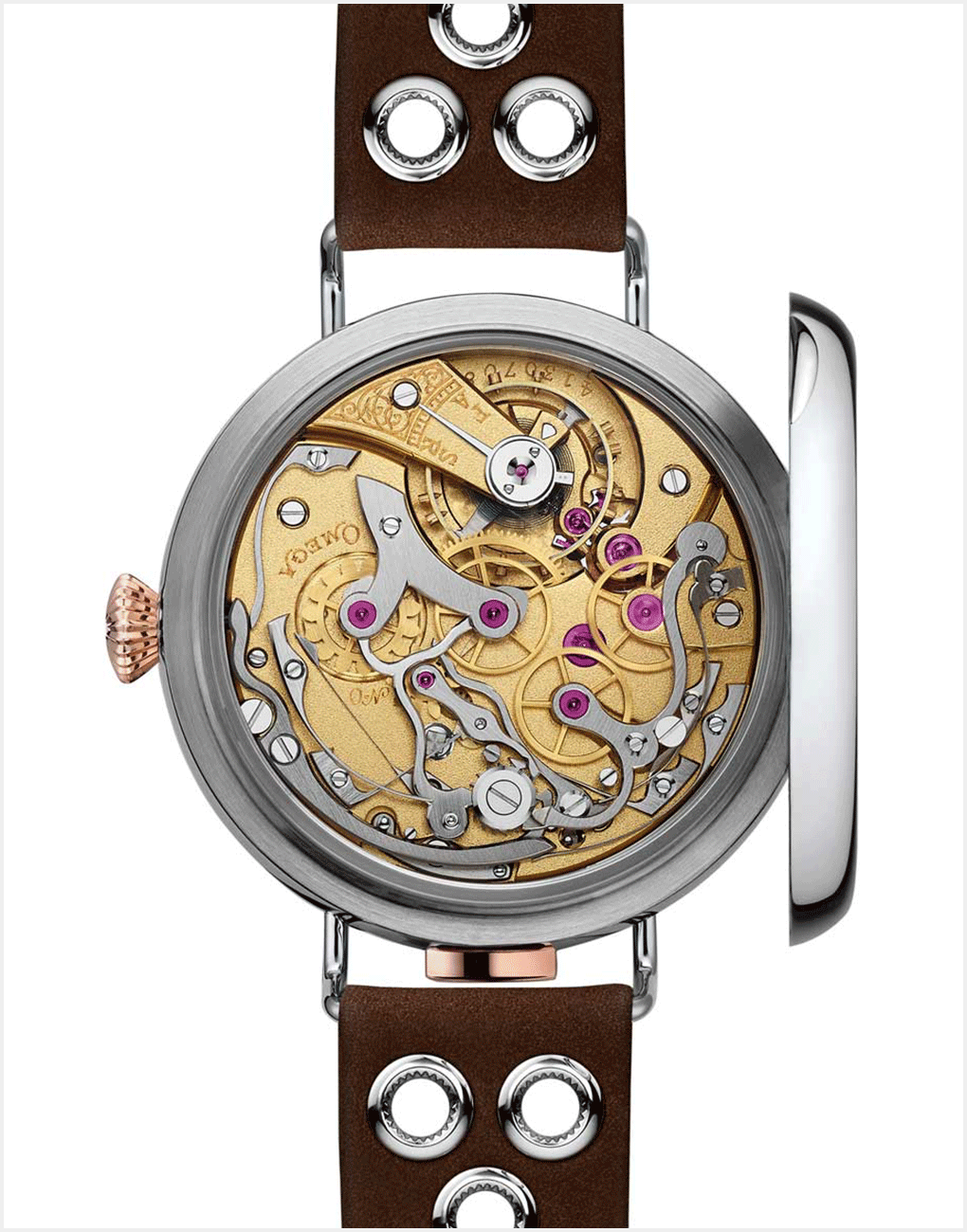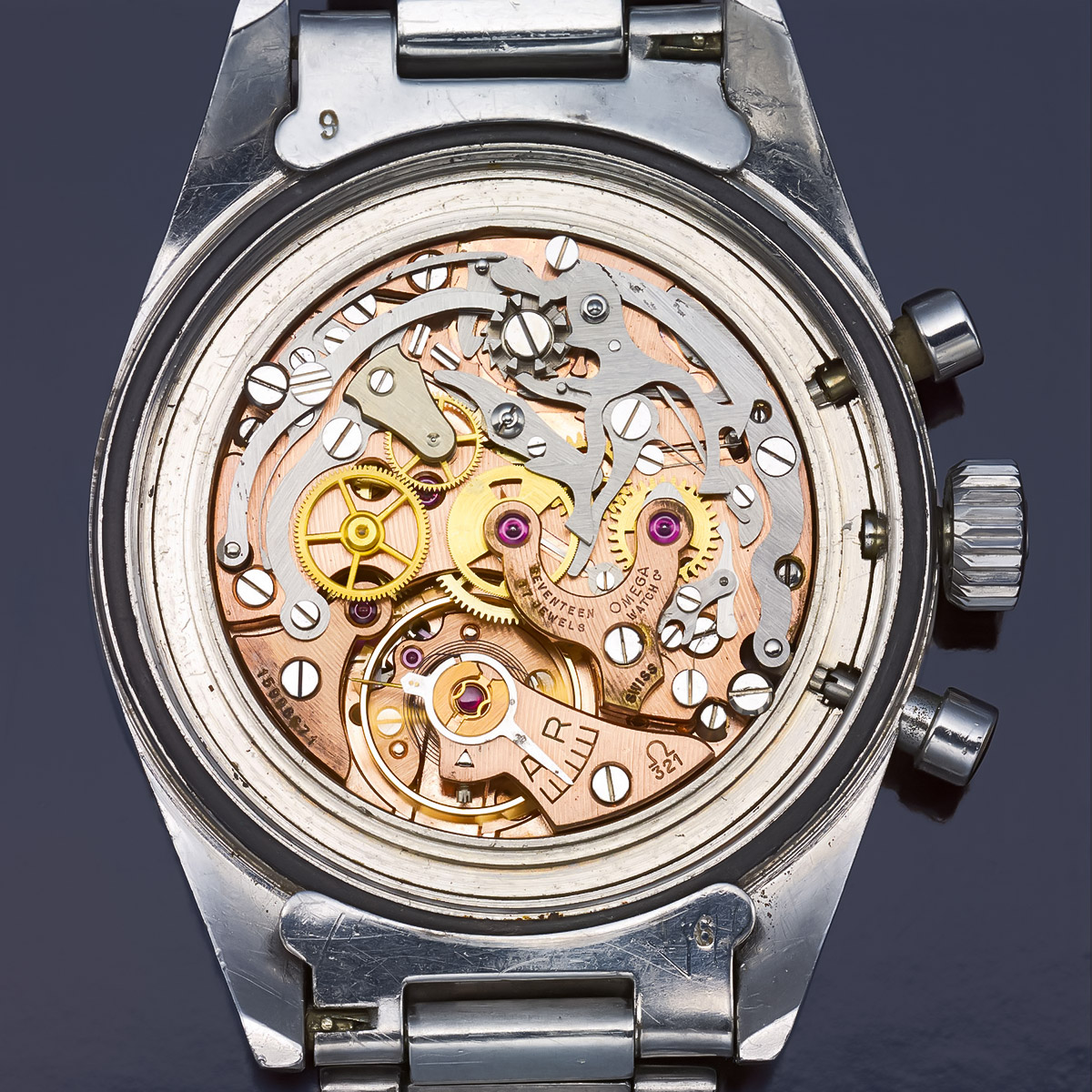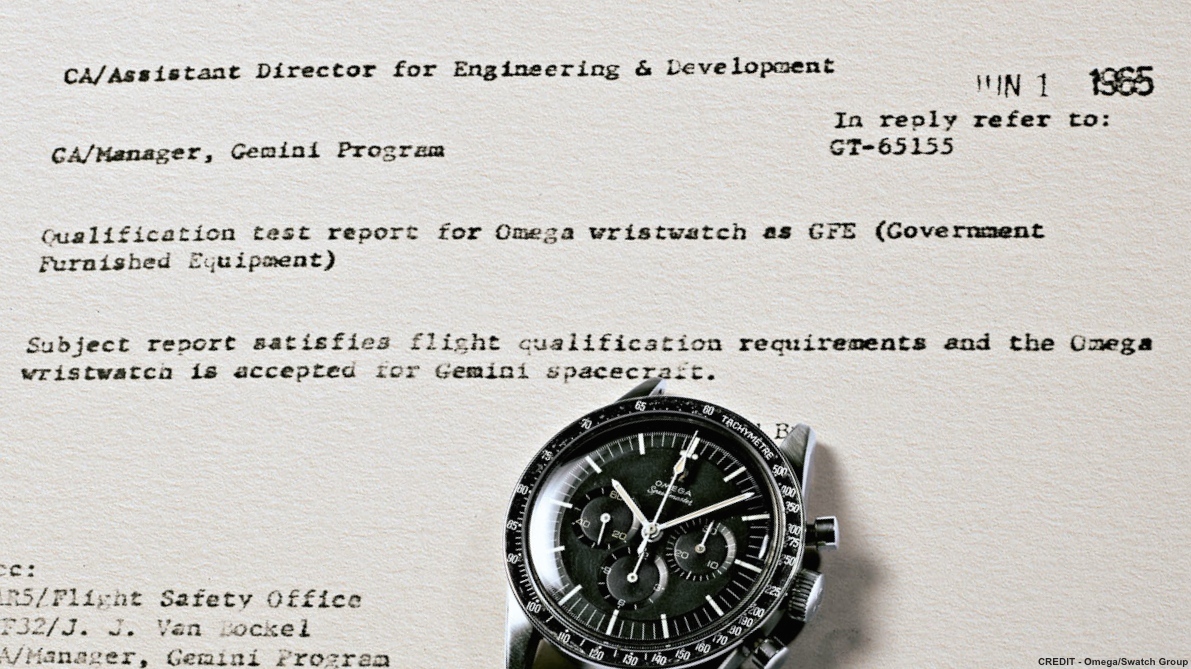FeatureThe Best There Ever Was—Omega Calibre 321, the #MoonCalibre
Revolution (magazine) pays tribute to the best chronograph movement there ever was, the Omega calibre 321; also known as the Lemania 2310
May We Recommend
As memorable movie lines go it’s one of the greatest. Robert Redford playing Roy Hobbs, a fictional character author Bernard Malamud, based on Phillies legend Eddie Waitkus, explains, “When I walk down the street people would have said, there goes Roy Hobbs the best there ever was in this game.” But the thing about being the ‘best there ever was’ doesn’t happen often. And history is full of long moments of mediocrity then suddenly like a high-pressure ground swell exploding through a fissure, extraordinary human beings rise up to surpass all our expectations. For those of us that are able to witness these moments; to quake in the transcendent grandeur of Muhammad Ali come back from a government enforced ban from boxing because of his conscientious objection to the Vietnam War, and against all odds knock out the seemingly undefeatable George Foreman. Or revel in the cosmic surreal majesty of Michael Jordan when on June 14, 1998 at the age of 35 he secured the Bulls’ sixth championship by stripping the ball from Karl Malone with 20 seconds left on the clock with the Bulls down by one point and sending home a jump shot with nine seconds to spare. The effect is to edify, to uplift and inspire the entire human species. When it comes to watch movements, this is how I’ve always felt in the presence of the Omega calibre 321. This is because I know with absolute irrefutable certainty, I am in the presence of greatness. So much so that I often lean towards the closest watch enthusiast in the vicinity and say, “This is the Omega calibre 321, the best that there ever was in this game.”

And sure, there are movements that might be technically superior, that might have higher vibrational speeds, or precise jumping minute counters, or LIGA wheels with flexible teeth to aid in better engagement between the drive and chronograph wheels. But these are all movements that emerged from the post CAD CAM, industrialised and automated era of production that we are now fully immersed. There is something about the absolute unassailable purity of the 321’s design and the fact that it is the single most storied movement, and the only chronograph that without a shadow of a doubt has saved the lives of multiple astronauts (during the NASA Apollo 13 mission) and allowed them to return safely home.
1989—The Omega 19″ CHRO
Before delving into the legend that is the Omega calibre 321, let’s first look at the brand’s long and illustrious history with the chronograph. The first chronograph movement created by Omega was the 19″ CHRO which was used in pocket watch chronographs dating all the way back to 1898.
1906—The Omega 18″ CHRO
This was followed by the 18″ CHRO, which was introduced in 1906. The 18″ CHRO, which was a monopusher pocket watch chronograph movement—where start, stop and reset are all activated by pusher at six o’clock—was famously used by Omega to create the world’s first wristwatch chronograph in 1913.
In July of 2018, Omega launched an amazing tribute to their own history in precision timekeeping with an 18-piece limited edition 18 CHRO, each replete with an actual 95-year-old movement uncovered from Omega’s archives.
Launched at an extraordinary evening at Omega’s museum the brand’s very dynamic CEO Raynald Aeschlimann explained, “The 18″ CHRO is an expression of our unparalleled legitimacy in the creation of wristwatch chronographs as it was the very first serially produced timepiece featuring this complication. This, of course, continues well into modern day with the Omega Speedmaster’s status as the world’s most iconic chronograph and the first watch ever certified for space exploration by NASA.”

1932—27 CHRO C12p, The Calibre 321 Precursor
Following the 18″ CHRO, a movement named the 39” CHRO was introduced in 1929 and used all the way to 1940. In 1932 Omega joined forces with Lemania and Tissot in a group called the SSIH (Societe Suisse pour L’Industrie Horlogere) which led to the development of the calibres 28.9″ CHRO and 33.3″ CHRO (which are based on the Lemania CH 13 and 15 calibres respectively). In the early ’40s, the SSIH focused on the creation of an all-new ground-breaking chronograph caliber. The movement was to be slim (6.74mm), measure 27mm in diameter, feature a substantial power reserve, be incredibly precise and extremely stable.
A watchmaker named Albert-Gustave Piguet was tapped to create this new chronograph. The chronograph movement would be executed in two versions, the 27 CHRO 17p (two counter) and 27 CHRO C12p (three counter). It would, thanks to Omega’s exploits over a quarter century later, become the single most legendary movement in Swiss watchmaking history.
It should be noted that the correct ancestor to the calibre 321 would be the C12p versions of the CH27 which featured a 12-hour counter in addition to the traditional 30-minute counter which would prove invaluable to Omega in timing long duration events. In 1945, an Incabloc shock absorber would be added and in 1946, an adjustable jumper spring would be fitted to the minute counter. It was a version featuring these two key improvements that would be dubbed the Omega calibre 321 in 1949.
1957—The Speedmaster CK2915 Meets The Calibre 321


In addition, the movement designed by Piguet would also feature what is arguably the most recognisable and has the most beautiful architecture in the history of the chronograph. The Lemania calibre 2310 which would evolve from the CH 27 would go on to be used by haute de gamme maisons such as Patek Philippe, Vacheron Constantin, Breguet and Roger Dubuis and is today the base calibre in some of the world’s most sought-after complicated watches, in particular the Patek Philippe 5970 perpetual calendar chronograph and the 5004 which adds a split seconds function to the mix. In each instance the basic movement architecture design by Piguet—a half century before—is at the centre of the beauty and collectability of these watches.

However, Piguet’s movement would go one to achieve its greatest fame hidden away from sight, behind the solid casebacks of the Omega Speedmasters it powered. The Omega calibre 321 was also used in very beautiful examples of the Seamaster Chronograph, one of the most sublime and undervalued dress chronographs of the ’50s and ’60s. However, it was in 1957 that the movement found its way into an Omega sports chronograph called the Speedmaster that its legend was truly born. By now the story has become one of the most renowned in human history.
In 1957 the Speedmaster reference CK 2915 was born as part of the brand’s Professional Collection along with the Seamaster 300 and the Railmaster. In 2017 Omega launched a stunning tribute to this original family of watches with the 50th anniversary editions of these timepieces where original watches were 3D scanned so they could be recrafted, down to their exact original specifications.
1962—The First Speedmaster in Space, Reference CK2998

On October 3, 1962, NASA astronaut Wally Schirra wore his Omega Speedmaster CK 2998 (the successor to the CK 2915) equipped with its Omega calibre 321 during his spaceflight. This watch was Schirra’s personal timepiece but around this time NASA’s astronauts began pushing for a high-precision wristwatch that would be given the status as official equipment timepiece to be worn on their missions.
NASA’s Quest For A Space-Worthy Chronograph

In 1964 NASA engineer James Ragan reached out to the US importers of Longines, Rolex, Hamilton, Omega and several others with a request for quotations for watches and for sample timepieces to be tested. Testing lasted from October 21, 1964 to March 1, 1965. It was, for lack of a better word, brutal.
The test involved six shocks of 40Gs each 11 milliseconds in duration, acceleration from 1G to 7.3 Gs in 333 seconds as well as enduring temperature variations from 0 to 200 degrees Fahrenheit. Ragan essentially tried to decimate these timepieces. In the end only the Omega Speedmaster (specifically a reference 105.003 model) was left standing, much thanks to the flawless performance of its exemplary calibre 321.
As a result, the Speedmaster became adopted as the official watch of NASA’s astronauts. Now more than half a century later, the Omega Speedmaster and NASA’s greatest achievements from Neil Armstrong and Buzz Aldrin’s moon landing to the narrow escape from death by the crew in Apollo 13 are inextricably intertwined. But you could make an argument it is the extraordinary Omega calibre 321 that made this all possible.

The point is for anyone that loves watchmaking, the Omega calibre 321 is the Holy Grail of movements, simultaneously beautiful to behold and proven to be the most reliable and durable movement of its kind. The calibre 321 was found in all the pre Moonwatches, in all models up until the 145.022-69, when a new movement, the calibre 861 was introduced. The primary difference between the two movements was that the 861 featured a higher vibrational speed, a flat terminal curve (the 321 had a Breguet Overcoil) and a switching cam instead of a column wheel to control the chronograph functions.
In all the three Speedmaster references certified by NASA—the 105.003, the 105.012 and the 145.012—the calibre 321 is the movement found within. The 321 is also the movement found in the vast majority of super collectable vintage Omega Speedmaster references including the CK 2915, CK 2918, and watches such as the 145.012-67 Ultraman with its distinct long orange chronograph seconds hand.
The Three Generations Of The Calibre 321
There altogether three generations of calibre 321 movements as explained in the spectacular reference book Moonwatch Only. Generation 1 (1957-1963), Transitional (1963-64) and Generation 2 (1964 -1969). A Generation 2 movement is immediately distinguished by its non-symmetrical clutch bridge while Generation 1 and Transitional movements both feature symmetrical bridges. The Transitional movements use the Generation 2’s beefier regulator index. Because the movements found in the three Speedmaster references certified by NASA are Generation 2, it was this version of the movement that Omega sought to recreate.
Because as part of the celebration of the 50th anniversary of the moon landing Omega announced in January 2019 that it would be bringing the hallowed calibre 321 back to life.

Says Aseschlimann, “When we asked Speedmaster collectors what their dream was, the vast majority said they wanted to see a resurrection of the calibre 321. So we thought if we are going to do this we have to do it the right way.” Which means, rather than using an existing Lemania 2310 ebauche from their Swatch Group sister brand Breguet, Omega decided to completely and accurately reverse engineer the original 321 calibre, down to its exact specifications.

It should be noted that in order to do this, Omega’s team helmed by Aeschlimann had to petition the Swatch Group’s board of directors. Because from a purely financial perspective, it made no sense to resurrect the 321. Especially in the way Omega intended which involved slice-by-slice 3D tomographic scans of the movement found in astronaut Gene Cernan’s actual ST 105.003 that he wore to the moon and that is now found in their museum. The cost of this scan alone was over one million Swiss francs. In addition, to replicate the exact pallet with its very specific guard pin, Omega had to approach NIVAROX to recreate this component down to its finest details. Said Aeschlimann, “The only way we could truly respect this incredible movement and all its devotees as well as the legions of fans passionate about the Speedmaster’s history is go down to these painstaking details and bring the 321 back in its full integrity and authenticity. That is the only way for us here at Omega.”
This story was originally published on Revolution, on July 20, 2019 (the 50th anniversary of the first moon landing). Revolution is one of the leading watch media titles, placing mechanical timepieces front and centre in a luxury-lifestyle format. Revolution is a global brand reaching a global audience, but with a strong knowledge of local markets and great relationships with top collectors and watch groups worldwide.






